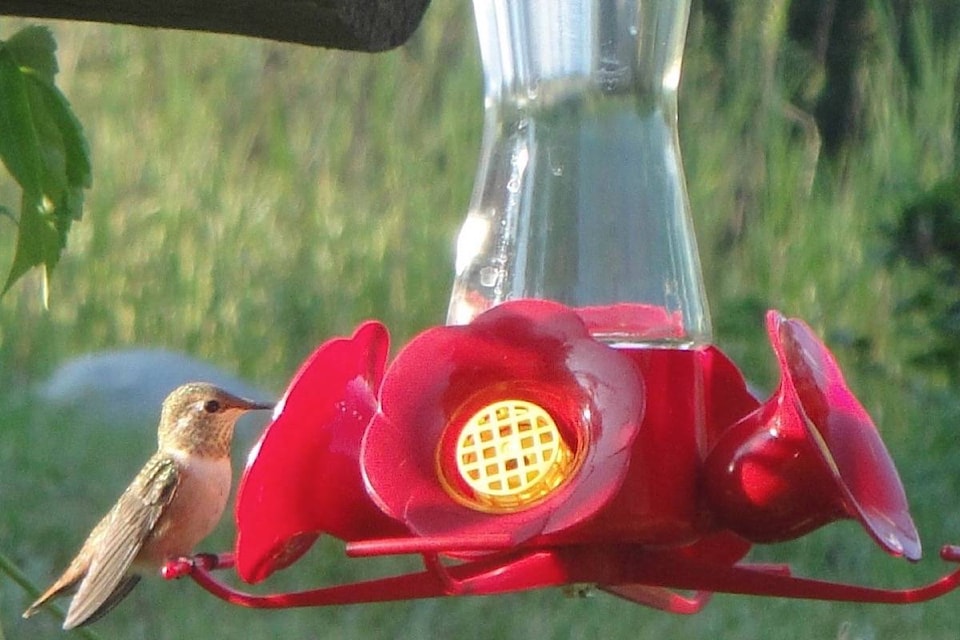Editor’s note: Karen Siemens, a member of the North Okanagan Naturalists’ Club, offers tips for feeding hummingbirds.
Clean Feeders
Clean with hot water (no soap).
Feeder should be completely dismantled and feeding ports taken apart.
Use a bottle brush for inverted feeders and pipe cleaners for the small holes.
Every time you refill your feeder take it apart and rinse with hot water.
Twice a week use the brush and pipe cleaners to ensure it’s clean.
Black mould is a death sentence to hummingbirds. If there is any sign of it soak your feeder for one hour in a mixture of 1/4 cup bleach to one gallon of water. Rinse the parts several times in hot water to remove all traces of the bleach.
Feeders
Glass feeders are best, but if you buy plastic make sure that it is “Food Grade Plastic” or “UV Stablized.” This ensures there is no chemical leakage into the food they eat. Cheap plastic disintegrates and will contaminate the food.
Whether you use inverted feeders or the basin style make sure that the feeder can be completely dismantled for cleaning.
Food
The best food for the humming birds is made by you!
One part white sugar to four parts water. Boil water in a pot then add sugar, or you may add boiling water from a kettle to sugar; stir until it completely dissolves. Cool to room temperature before filling feeder. You can store this in the fridge for seven days.
Never use brown sugar, honey or sugar substitutes as these contain components that will harm the birds.
Do not use red dye (the red on the feeder is all that is needed to attract them). Do not add scent.
If the food is cloudy it is bad; clean feeder and refill.
Even though it may not look like it, the food can go bad quickly in hot weather.
To avoid mould, change your food frequently, and err on the side of caution.
Temperature of 25 degrees or less, change every four days; 25 to 30, every two days; above 30, every day.
Only fill the feeder with what is being used between cleanings.
Plants
You may already have perennial hummingbird plants in your garden like bee balm, bleeding hearts, columbine, foxglove, honeysuckle, joe pye plant and Russian sage to name a few, but you can accent those plants with annuals in containers or hanging baskets.These can be salvia, fuschia, snapdragons, verbena, zinnia and the old favourite, petunias..
Keep your hanging baskets beyond the reach of predators.
There are few birds that are as entertaining as the hummingbirds so enjoy them!
The Rocky Point Bird Observatory in Victoria has more information on its web site at brpbo.org/hummingbirds.php
